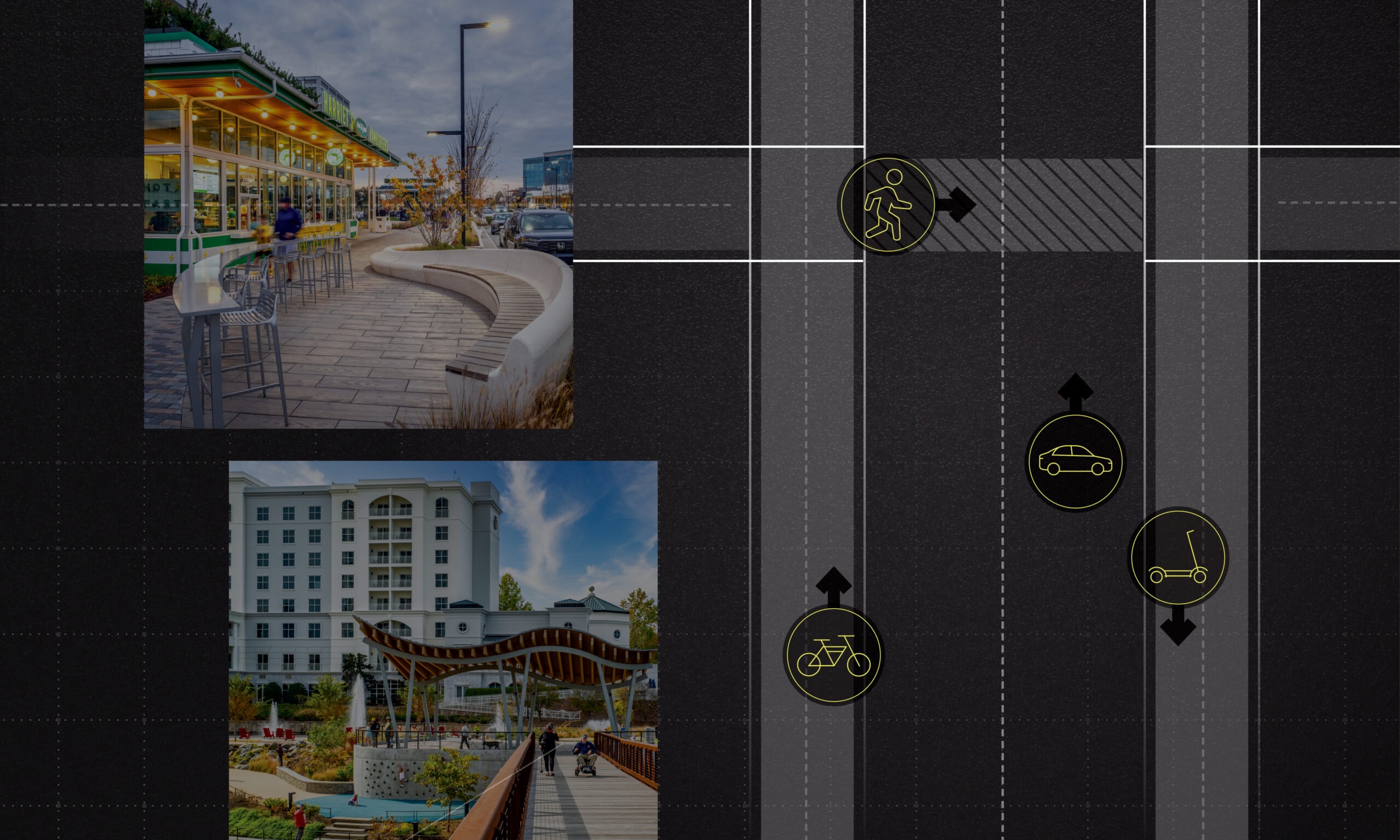Every project at LandDesign is an opportunity to push the boundaries of innovation for the purpose of a better outcome. Our designers are encouraged to pursue uncommon collaboration—be that a differing perspective, discipline, or technology—to uncover the right solution for each project. This way of thinking allows us to de-silo innovation and seek new tools that equip, aid, and empower us during the design process.
In our practice, we leverage technology for the targeted purpose of efficiency, quality, and clarity of design. We define the integration of technology in two distinct ways with the first being the means and methods of implementing existing technology, and the second being new and more intuitive ways to interact with design. While the application of technology can take on a variety of forms, we believe that the magic happens when the tools actively aid in a transparent and authentic way that accentuates the human element of design.
The Means + Methods of Implementing Technology
We approach design technologies with the goal of achieving Digital Twinning, or the creation of a 3D model that is detailed to a point that is near identical to the built condition. 3D modeling is not a novel concept by any means, especially when it comes to the built environment. However, we recognized the opportunity to collaborate more closely with every project stakeholder, from clients and architects to contractors and review agencies. Digital Twinning affords the design team an invaluable look at the built condition before it becomes a permanent built condition and the ability to leverage the model to easily perform work within their scope.
We believe that the magic happens when the tools actively aid in a transparent and authentic way that accentuates the human element of design.
-

Leveraging existing design technologies, such as Revit, Civil 3D, and even drone surveying, allows us to identify potential site constraints and challenges early on and create a true marriage between the underground infrastructure, landscape, and built structures. With a recent project, our landscape architects and civil engineers utilized drone surveying and up-to-the-minute aerial photography to create a living 3D model of the site that evolves with design in real time.
This model included both the civil elements—underground infrastructure and stormwater—and the landscape elements—modeled and materialized surfaces and trees—which were then plugged into the architects’ model for a comprehensive look at the project at any given time. Spatial conflict resolution was not performed on plans, but rather through a weekly BIM collaboration meeting with the entire project team navigating the model. This allowed the client to clearly envision the final product and provide clear direction and clarity and the contractor could clearly visualize what they needed to build prior to ever breaking ground.
The advancement of design technologies and accessibility of 3D modeling supports a process where every member of the project team is on the same page throughout every phase of the project. The 3D model becomes the sole, living source of truth of the design and can be handed off to anyone at any time.
Emerging Technologies and Their Opportunities
We often view true emerging technologies as complex, intimidating, and difficult to integrate into an existing process. Our belief at LandDesign is quite the opposite. In the case of true emerging technologies, we believe they provide a new, more intuitive way to interact with design, e.g. augmented reality (AR) and virtual reality (VR). We have put forth a great deal of effort to develop computers and design software that respond to instructions by pushing keys on a keyboard or moving and clicking a mouse. Current AEC design tools, the process of driving the software is largely limited to an on-screen setting and requires the designer to take several steps before achieving the desired outcome. But with AR and VR, that process becomes instinctive with a natural functionality within a spatial, very real environment. Rather than the laborious ‘click, drag, drop, repeat,’ AR and VR allow for a seamless, almost innate process for modifying and manipulating design as if you would if they were real objects. These tools encourage a designer to trust their instincts to make continuous design decisions and alterations without a glitch.
The AR and VR realms also create a process where clients, project team members, contractors, and even permitting agencies can interact in a space that feels so real that the clarity of design is elevated to a new level. Everyone involved is empowered to bring forward design ideas and iterate concepts in a visual and realistic way to inform design decisions at the highest level. As a tool to facilitate collaboration, it is our goal that AR and VR contribute to a process that is so natural and inherent that the project team doesn’t even realize that technology is present. We are laser-focused on this technologies’ evolution and introduction into our industry, and at a time in the not-so-distant future we are excited to extend its value to our clients.
As we explore, test, and implement new technologies, our goal is that these tools elevate our work and create an evolving platform for innovation within our practice. The clarity, efficiency, and quality that technology affords is not limited to just our practice. There is a greater opportunity to leverage other means and methods of technology to facilitate processes for ideation and collaboration, and even the user experience within the public realm. The ever-changing nature of technology is an opportunity to embrace the unknown in the pursuit of uncommon collaboration—and it’s a lot of fun too.




